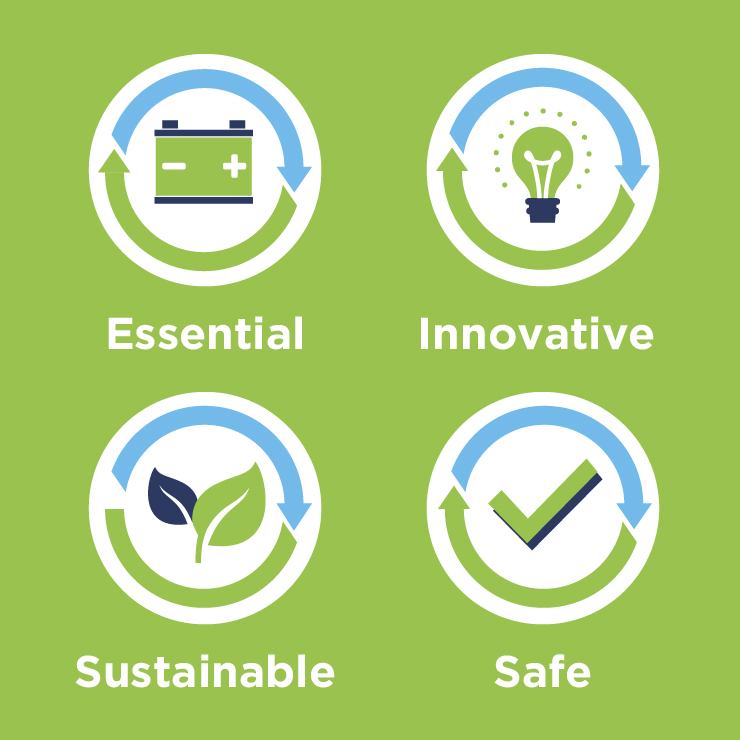Lead Batteries Provide Essential Energy Everyday
25 Sep 2018

Lead batteries meet 75 percent of the world’s requirements for rechargeable energy storage, and the global demand for stored energy is projected to grow from an annual installation size of 6 gigawatts (GW) in 2017 to over 40 GW by 2022, according to a study conducted by IHS Markit.
What’s driving this growth? Domestic demand is driven by utility groups seeking to supplement power during peak demand, searching for a greener mix of energy sources and adjusting to a more electrified economy. Global growth is driven by the same demands, as well as remote access to power in developing areas of the world.
Despite the evident demand for stored energy, many policymakers and regulators making decisions on the future of energy storage have little understanding of the present and future role lead batteries will play in meeting tomorrow’s energy needs.
With this as the backdrop, the U.S. lead battery industry launched its first communications and educational initiative in 2017 under the direction of the International Lead Association (ILA) and Battery Council International (BCI).
“It’s become increasingly clear that there’s a lack of understanding of the value lead batteries provide modern society and the potential they have to solve future energy requirements,” stated Jerry Pyatt, Doe Run president and CEO. “Research confirmed that policymakers and regulators in the transportation, energy storage, environment and public health sectors do not fully understand the extent to which lead batteries enable our economy, protect communications and data infrastructure, and contribute to a renewable energy future. It was time for our industry to respond.”
The educational initiative built upon earlier research and was developed under the direction of the lead battery industry (including Doe Run), and the management teams of BCI and ILA. The Advancing Lead Battery Communication Initiative (ALBCI) developed educational strategies and tactics around the theme of Essential Energy Everyday.
“We launched the Essential Energy Everyday initiative in fall 2017 with a microsite and digital communications campaign targeting policymakers and regulators,” stated Lisa Dry, director of strategic communications, BCI. “The microsite, subsequent videos and other materials included pertinent facts related to the four key attributes of lead batteries.”
 Essential: Lead batteries meet 75 percent of the world’s requirements for rechargeable energy storage, including starting 270 million cars and trucks in the U.S.
Essential: Lead batteries meet 75 percent of the world’s requirements for rechargeable energy storage, including starting 270 million cars and trucks in the U.S.- Safe: Unlike newer battery technologies, lead batteries have more than a century of safe use in vital industries, such as transportation, communication, security, marine, nuclear, medical and aviation.
- Innovative: Performance improvements in lead batteries are transforming the transportation industry by reducing fuel consumption and CO2 emissions, powering next-generation vehicles (xEVs), and increasing vehicle electrical demands.
- Sustainable: Lead batteries have a 99 percent recycling rate, and every new lead battery is comprised of more than 80 percent recycled lead.
In addition to the website, the initiative conducted an economic impact survey of the U.S. battery industry, including lead miners, metal producers, battery manufacturers and recyclers. The study, which was published in January 2018, revealed that the lead battery industry contributes $28 billion to our economy and employs more than 20,000 people. Learn more about Essential Energy Everyday here.


